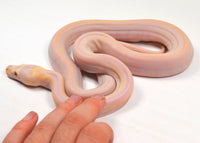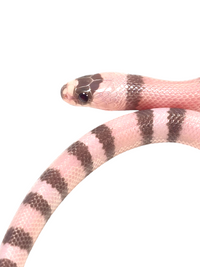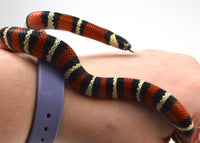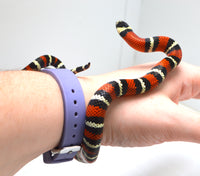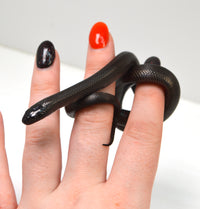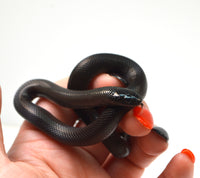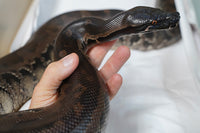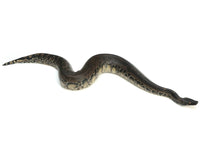BLOOD PYTHON FAQs & CARE INFORMATION

Blood Python Information
Common Name: Blood Python
Scientific Name: Python Brongersmai
Family: Pythonidae
AKA: “Bloods” “Red Bloods”
General Blood Python Information
Distribution:
This Indonesian species is found in palm plantations, tropical forests and marshes in the Malaysian peninsula, eastern Sumatra and outlying islands.
Wild Status:
Widespread throughout their range but diminishing in numbers, blood pythons are extensively exploited in the skin trade, and large numbers are slaughtered for their meat & hides. Over 60,000 blood & short-tailed python skins are harvested each year, a grim and sickening fact.
Description:
Blood pythons are squat, heavy-bodied serpents with variable markings. The body ranges in coloration from yellow, tan & brown to a bright red, cherry red or oxblood, with lighter tan, gold, orange & black blotched markings. The head is typically gray, although specimens may exhibit black, light gray, or even red heads. Blood pythons are well known for their changing head colors – what may be a black-headed snake in the evening could have a very pale, faded head in the morning and vice versa. Some blood pythons exhibit broken dorsal striping.
Wild-caught bloods tend to be nervous, irritable and even aggressive; on the other hand captive-bred specimens often mature into docile, placid animals that are a joy to handle. This is a species where choosing a good, CB animal can make a huge difference in your snake-keeping experience.
Blood Python Size:
Hatchlings: approximately 12 – 16″+/-.
Adult size: Females average 4′- 6′. Males average 3′ – 5′. The maximum reported size is around 10 feet, although 8’+ specimens are considered EXTREMELY large. Blood pythons are heavy, robust snakes that may exceed 30 pounds in weight as mature adults.
Lifespan: 15 Years
Blood pythons may live 25 years or more in captivity.
Color Mutations:
There have been an incredibly large amount of mutations over the years from T- Albino, T+ Albino, Goldeneye, Matrix, and even locality animals like Bangkas.
Captive Maintenance Guidelines
Difficulty Level:
Intermediate. Not an animal for the beginner, a blood python can make a rewarding captive for the intermediate keeper who has successfully kept other species for a length of time. This is a species that requires prior experience & some ability to perceive and understand snake behavior.
Enclosure:
Enclosures can be as simple or elaborate as one is capable of caring for. Remember that the more “stuff” you put in a cage, the more “stuff” you have to clean & disinfect on a regular basis. That said, there are many different enclosures that work well for blood pythons, including but not limited to: plastic sweater boxes (i.e. Rubbermaid), melamine racks, Freedom Breeder cages, and any of the commercially available plastic-type reptile cages, (i.e. those from Vision Herp & other similar manufacturers).
Glass aquariums & tanks are adequate; keep in mind that the screen tops on such enclosures can make it difficult to maintain humidity levels. Also refer to our Snake Caging care sheet for more information.
Juvenile blood pythons seem to do well in smaller enclosures that make them feel more secure; a small snake in a big cage can become overwhelmed & stressed. For large blood pythons, a minimum cage length of 4′ is necessary.
If you must choose between the width of the enclosure & the height, always choose the extra width, as your blood will appreciate the extra floor space. Remember that ALL enclosures must allow for a proper thermal gradient that the snake can utilize, with a hot spot on one end and a cooler spot on the other.
Substrate:
There are a few substrates that work well. Newspaper is the cheapest & easiest with regards to cleaning & disinfecting: out with the old, in with the new. Cypress mulch is great for controlling humidity but remember that too much humidity can be as detrimental (if not more) as too little. Never use any substrate containing cedar, as this is deadly to reptiles!


